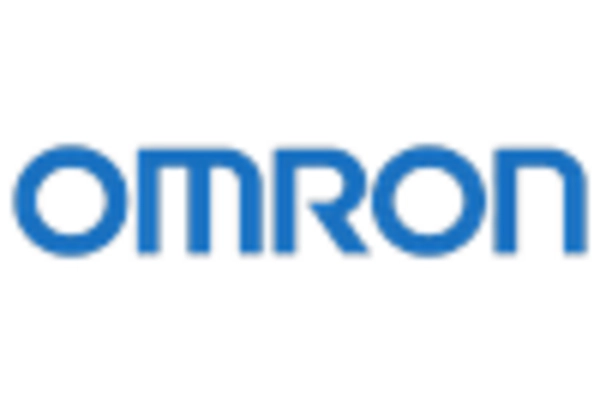Technological Advancements in Robotics
The semiconductor wafer-transfer-robots market is significantly influenced by rapid technological advancements in robotics. Innovations such as enhanced automation, improved sensors, and artificial intelligence capabilities are transforming the functionality of wafer-transfer robots. These advancements enable higher precision and reliability in wafer handling, which is crucial for maintaining the integrity of semiconductor manufacturing processes. As a result, manufacturers are increasingly adopting these advanced robots to streamline operations and improve yield rates. The market is anticipated to witness a robust growth trajectory, with investments in research and development expected to reach approximately $1 billion by 2026, further solidifying the role of technology in shaping the semiconductor wafer-transfer-robots market.
Focus on Sustainability and Energy Efficiency
Sustainability has emerged as a critical driver in the semiconductor wafer-transfer-robots market. Manufacturers are increasingly prioritizing energy-efficient solutions to minimize their environmental impact. The integration of energy-saving technologies in wafer-transfer robots not only reduces operational costs but also aligns with regulatory requirements aimed at promoting sustainable practices. As companies strive to achieve carbon neutrality, the demand for robots that consume less energy and generate lower emissions is likely to rise. This trend is expected to contribute to a more competitive landscape in the semiconductor wafer-transfer-robots market, as firms that adopt sustainable practices may gain a significant advantage over their counterparts.
Growing Need for Enhanced Production Efficiency
The semiconductor wafer-transfer-robots market is increasingly driven by the need for enhanced production efficiency in semiconductor manufacturing. As competition intensifies, manufacturers are compelled to optimize their processes to reduce costs and improve output. Wafer-transfer robots play a crucial role in achieving these objectives by automating the handling and transportation of wafers, thereby minimizing human error and increasing throughput. The market is likely to expand as companies seek to implement more efficient production systems. It is estimated that the adoption of advanced wafer-transfer robots could lead to a 20% increase in production efficiency, making them indispensable in the semiconductor wafer-transfer-robots market.
Increased Investment in Semiconductor Infrastructure
The semiconductor wafer-transfer-robots market is benefiting from substantial investments in semiconductor infrastructure across the United States. Government initiatives and private sector funding are driving the establishment of new fabrication facilities and the expansion of existing ones. This influx of capital is aimed at enhancing domestic production capabilities and reducing reliance on foreign supply chains. As new facilities come online, the demand for wafer-transfer robots is expected to rise sharply, as these robots are essential for efficient manufacturing processes. The semiconductor wafer-transfer-robots market is projected to see a growth rate of around 12% annually, fueled by this investment trend.
Rising Demand for Advanced Semiconductor Technologies
The semiconductor wafer-transfer-robots market is experiencing a surge in demand due to the increasing complexity of semiconductor manufacturing processes. As technology advances, the need for precision and efficiency in wafer handling becomes paramount. The market is projected to grow at a CAGR of approximately 10% over the next five years, reflecting the industry's shift towards more sophisticated production techniques. This growth is largely attributed to the rising demand for high-performance chips used in various applications, including consumer electronics and automotive sectors. Consequently, manufacturers are investing in advanced wafer-transfer robots to enhance productivity and reduce operational costs, thereby propelling the semiconductor wafer-transfer-robots market forward.















Leave a Comment